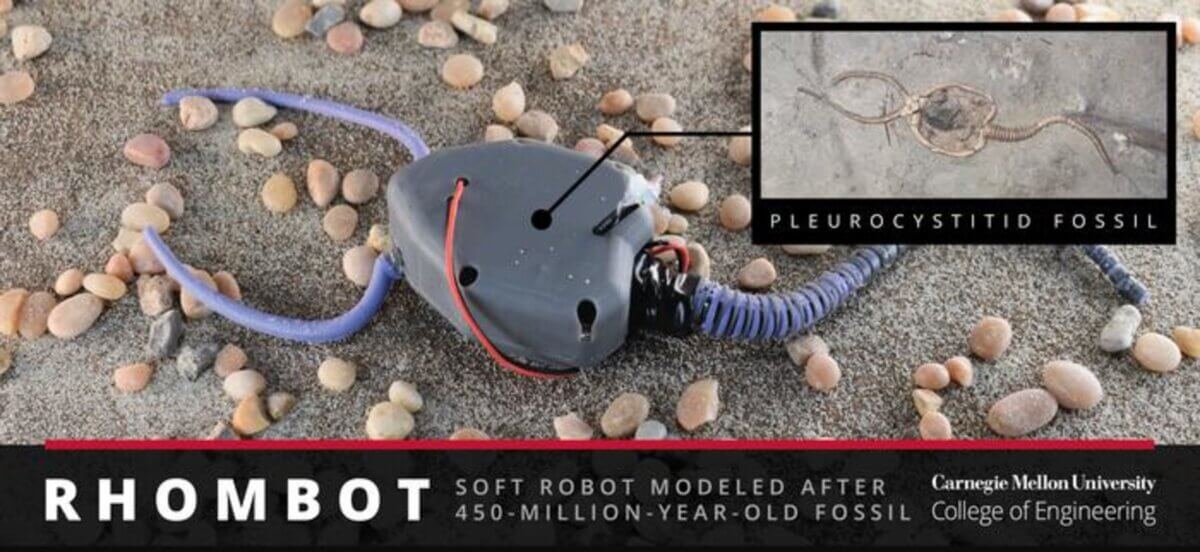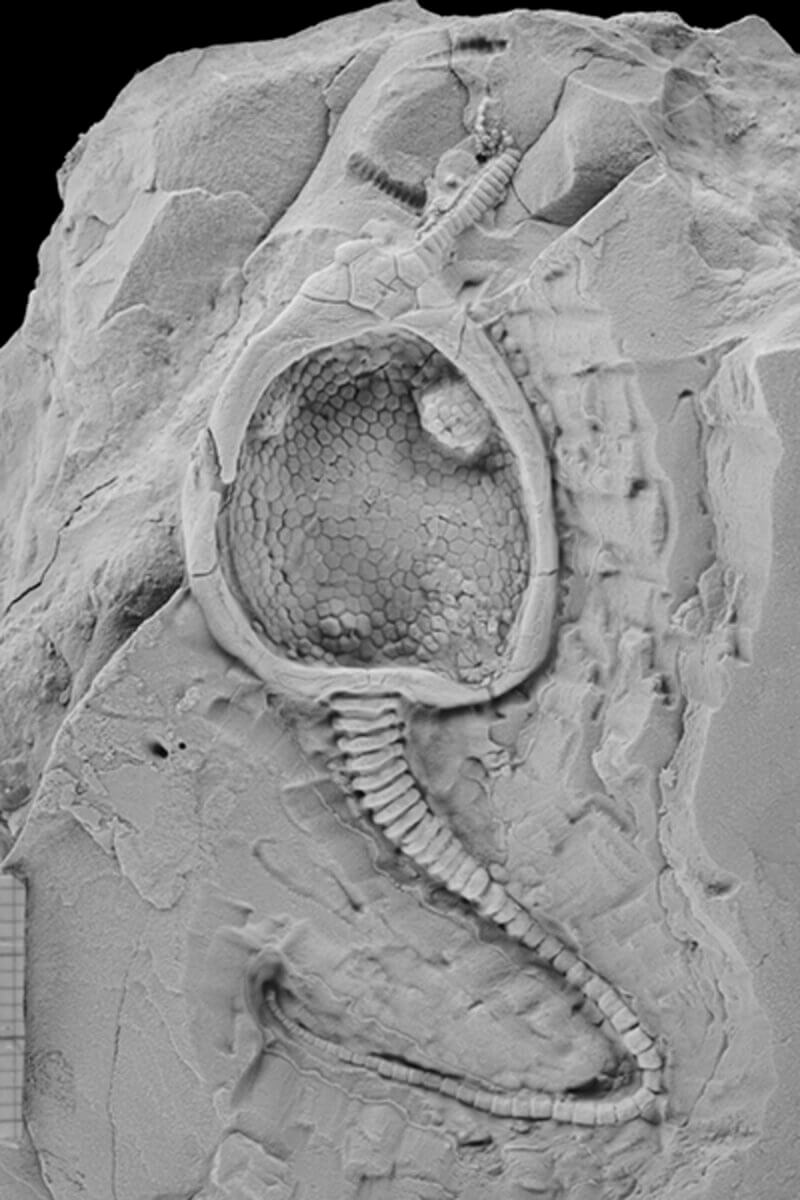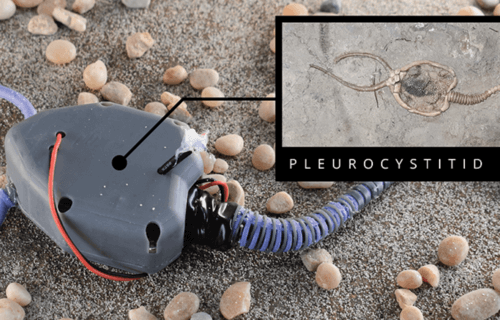PITTSBURGH — Life finds a way. Scientists from Carnegie Mellon University’s Department of Mechanical Engineering brought a 450-million-year-old marine organism back to life, creating a soft robotic replica of a pleurocystitid. This creature is believed to be one of the earliest echinoderms capable of movement through a muscular stem.
Their innovative work not only resurrects an ancient organism but also pioneers a new field of study — Paleobionics. This emerging field combines Softbotics, a branch of robotics that utilizes flexible electronics and soft materials, with paleontology to investigate the biomechanical factors that drove evolution using extinct organisms.
“Softbotics is another approach to inform science using soft materials to construct flexible robot limbs and appendages,” explains study lead author Carmel Majidi, professor of mechanical engineering at Carnegie Mellon University, in a university release. “Many fundamental principles of biology and nature can only fully be explained if we look back at the evolutionary timeline of how animals evolved. We are building robot analogues to study how locomotion has changed.”

In a world where human history represents a mere 0.007 percent of Earth’s existence, our understanding of evolution and modern mechanical systems is influenced by only a fraction of the diverse creatures that have inhabited the planet over time.
Researchers turned to fossil evidence to guide their design, using a combination of 3D-printed components and polymers to recreate the flexible columnar structure of the pleurocystitid’s moving appendage. Through their efforts, they demonstrated that these ancient organisms likely moved along the seabed using a muscular stem to propel themselves forward. Despite the absence of modern-day echinoderm counterparts, such as starfish and sea urchins, pleurocystitids have piqued the interest of paleontologists due to their significant role in echinoderm evolution.

The study revealed that wide sweeping movements were likely the most efficient means of locomotion, and increasing the length of the stem significantly boosted the animal’s speed without requiring additional energy expenditure.
“Researchers in the bio-inspired robotics community need to pick and choose important features worth adopting from organisms,” says study co-author Richard Desatnik, PhD candidate at Carnegie Mellon University.
“Essentially, we have to decide on good locomotion strategies to get our robots moving. For example, would a starfish robot really need to use 5 limbs for locomotion or can we find a better strategy?” adds study co-author Zach Patterson, a Carnegie Mellon alumnus.

Having demonstrated their ability to use Softbotics to recreate extinct organisms, the team aspires to explore other ancient creatures, including the first organisms that transitioned from sea to land — a phenomenon that cannot be studied in the same way using conventional robot hardware.
“Bringing a new life to something that existed nearly 500 million years ago is exciting in and of itself, but what really excites us about this breakthrough is how much we will be able to learn from it,” says study co-author Phil LeDuc, professor of mechanical engineering at Carnegie Mellon University. “We aren’t just looking at fossils in the ground, we are trying to better understand life through working with amazing paleontologists.”
The experiment is published in the journal Proceedings of the National Academy of Sciences.
You might also be interested in:
- Ghastly 310-million-year-old spider fossil unearthed
- 505-million-year-old fossil named the oldest species of swimming jellyfish
- Real-life Jurassic Park? Scientists recover RNA that may resurrect extinct Tasmanian tiger

